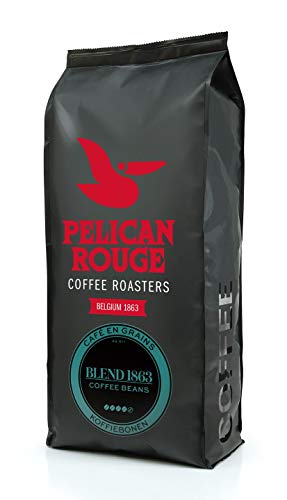Types of Coffee Beans
Behind every cup of coffee that we drink, there are carefully graded bean. These beans are graded based on size, color and shape.
coffee beans bulk is given to coffee beans that meet all of the above criteria, but they must not have more than three deficient qualities (quakers). These are typically Kenya AA beans.
Arabica
Arabica coffee beans are also referred to as Coffea Arabicica and are the most coveted bean in the entire world. The legend says that coffee was discovered in Ethiopia when a goat herder observed his herd dancing with more energy after eating the fruits of the coffee plant. This led him to try roasting and brewing the seeds, creating the beverage we now know and love today.
There are a variety of coffee plants, but only two are used to make our favorite brews - arabica and robusta. The former is generally considered to be superior to the latter, and this is reflected in the taste of the finished beverage.
There are many different arabica cultivars. Each one has distinct flavor profiles. Typica and Bourbon are two of the most popular arabica cultivars. All other arabica varieties were developed from these two varieties, either through natural mutations or deliberate crossbreeding. The SL28 cultivar, for example, was developed in Kenya by Scott Labs and is known for its distinct chocolatey flavor.
The taste of the arabica variety is contingent on the conditions in which it was planted, and also on how it was handled and roasted. For example, the type of shade a tree gets as well as its altitude and soil composition could all play a significant part in the final flavor.
Robusta
Robusta coffee beans (Coffea canephora) are the second most popular type of coffee. They are commonly used in instant coffees, and contain twice as much caffeine than Arabica Coffee Beans. They also are used in the making of many espresso blends particularly for cappuccino, caffe latte and other coffee drinks.
Coffea Canephora is a plant that originated from Sub-Saharan Africa. It has been cultivated throughout the world since. It can grow at lower altitudes and can withstand higher temperatures than the Arabica coffee plant, which makes it a much more practical crop for farmers. Vietnam is currently the biggest producer of robusta coffee, followed by Brazil and Indonesia.
The robusta plant is a good coffee however it's not a favorite among cupping enthusiasts due to its bitter taste and burnt-rubber notes. It's generally regarded as to be a lower quality coffee and a majority of the major coffee companies use arabica beans for their premium products.
The demand for specialty coffees is growing, and small roasters are trying to capitalize on its outstanding qualities. Our Valhalla Java and Death With Coffee are two excellent robusta coffees, which are blended with arabica to give the perfect blend of flavour and strength. The coffees are carefully sourced from Uganda, where robusta has been grown for many centuries. Find out more about them.
Liberica
Liberica coffee beans are rare varieties that are seldom used in the world. They're less than percent of the world's total consumption of coffee beans, and are often overlooked as they do not have the same amount of caffeine. However, these beans possess an unique flavor that many coffee lovers find irresistible.
Despite being extremely scarce, Liberica coffee beans are still popular in a few regions of Asia. They are most prevalent in Malaysia and Indonesia where there is a significant Muslim community. In these countries, the coffee industry has been very strong for many years. Drinking a cup coffee following a prayer is a part of their culture.

Liberica coffee's roots go back to the 1890s which was the time when a global epidemic caused by coffee leaf rust caused a massive loss of the arabica crop. This event prompted coffee producers to look for a resilient plant that could thrive in tropical climates. They soon discovered Liberica.
Liberica plants have a high tolerance to pests and diseases, which made them a perfect replacement for the devastated arabica crop. Liberica also has the capacity to thrive in hot temperatures and lower altitudes, which enabled it to thrive in the climate of Southeast Asia. This is the reason why, today, most of the coffee that is produced in the Philippines, Indonesia, and Malaysia originates from Liberica beans.
Excelsa
While it's not common for coffee drinkers to see excelsa beans in their cups, these exclusive beans are gaining an image due to their distinctive flavor. According to Komal Sable, a fifth generation coffee farmer with South India Coffee Co. The beans are "a variation of the liberica species, and have similar teardrop shapes, but a smaller size." It's important to keep in mind that, despite the resemblance of family between excelsa and liberica, this species is not distinct from either.
As such, it's a bit confusing how excelsa beans should be classified. It's this confusion that's been at the root of the beans' lack of presence in the modern world of coffee. Due to this, many roasters, growers and brewers aren't sure how to grow and utilize these beans properly.
Ultimately, it's up the individual to determine what they prefer about the taste of the coffee excelsa and it may take a little longer to discover a blend that is suitable for their preferences. It is important to be open, and try each type of coffee until you've discovered the one that you like. In this way, you'll be able to experience the full possibilities that these unique beans can offer. It's a journey that's well worth the effort.
